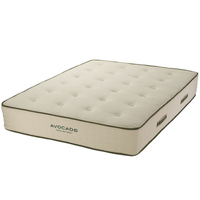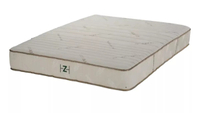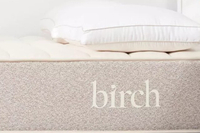
Latex mattresses are known for being hard-wearing, long-lasting, hypoallergenic, and environmentally friendly. But they're also generally more expensive than other types of mattress. So are they worth the extra cash?
In this article, we'll tell you everything you need to know about latex mattresses, to help you decide whether they're the best mattress for your needs. Many of today's best organic mattresses use latex foam as an alternative to synthetic foam (you can read about the key differences in our latex vs memory foam mattress explainer). In this article, we'll run through how latex mattresses are made, how they perform, and their good and bad qualities when compared with other types of mattresses.
What is a latex mattress made of?
Latex mattresses are made from natural latex, a milky fluid extracted from the sap of rubber trees. They're typically constructed using one of two methods: the Dunlop process or the Talalay process.
In both cases, liquid latex is poured into a mould. In the Dunlop process, it is then baked. This results in a dense foam with a firmer feel to it.
In the Talalay process, meanwhile, the mould is only partially filled. The lid is vacuum-sealed and then the latex is left to expand. Once it's fully expanded, it's then frozen and only then baked. This creates a foam with softer feel. Some latex mattresses are made using a combination of both Dunlop and Talalay processes.
The latex foam is then cut to size and encased in a mattress cover for comfort and protection. A typical latex mattress is made up of multiple layers of latex foam, plus other materials like wool or cotton may also be added to the mix for extra comfort, and often a layer of springs too.
How much do latex mattresses cost?
Latex mattresses are generally on the expensive side. For example, the PlushBeds Botanical Bliss mattress starts at $1,549 for a Twin and goes up to a $2,349 for a Cal King.
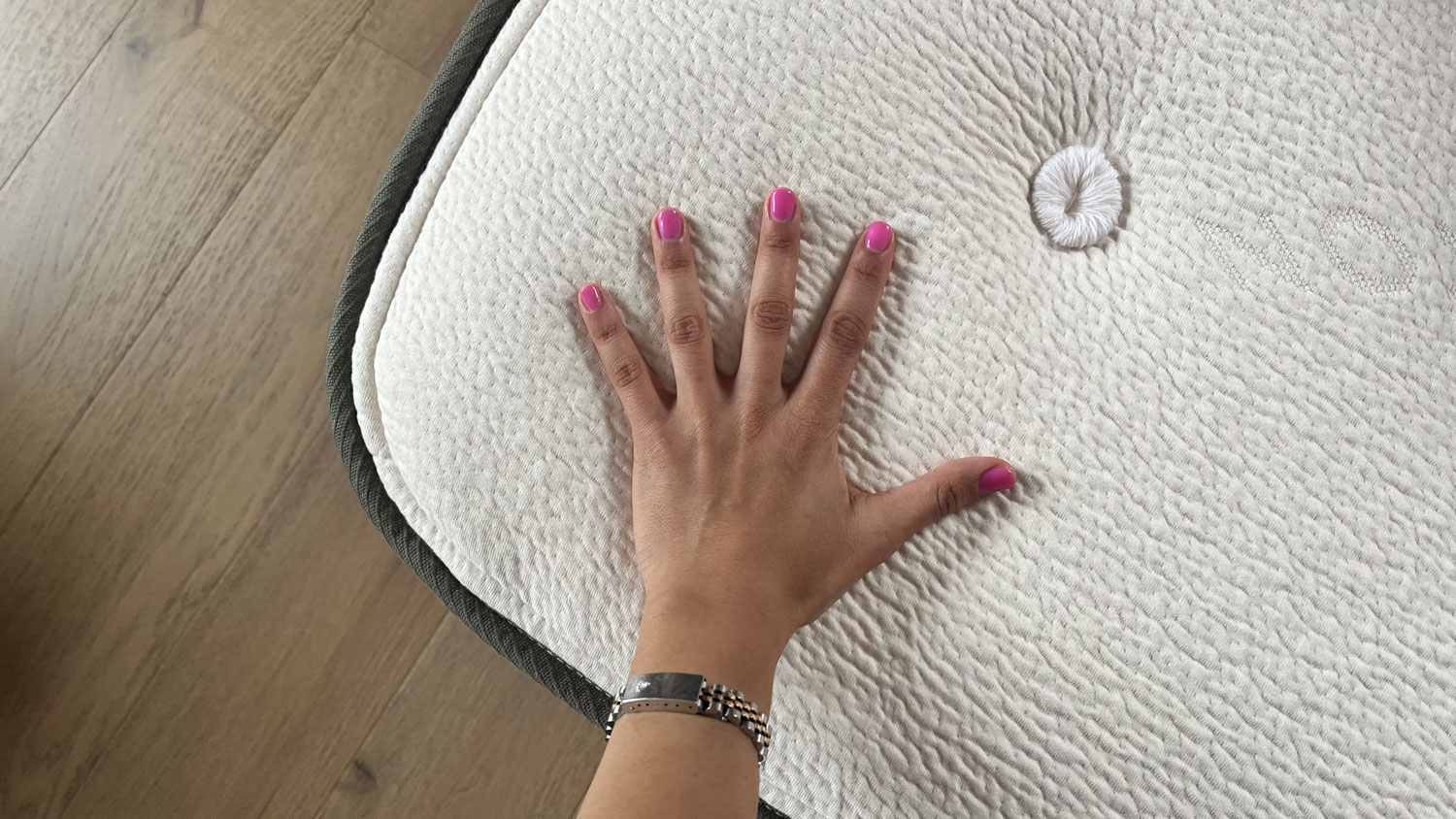
What does a latex mattress feel like?
In terms of comfort, latex mattresses sit somewhere in between memory foam mattresses and sprung mattresses in terms of support vs pressure relief. If you're not sure what we mean by that, let us explain in simpler terms…
When you lie on a memory foam mattress, its feels like you're sinking into it. That's because the material responds to your weight and body heat in a very responsive way. Some people love this sensation, as it makes them feel cradled, like a big hug. It also reduces the pressure on hips and shoulders when you're on your side. Others dislike the feeling, though, as it makes them feel 'stuck' and 'trapped'. It's largely a personal thing.
In contrast, innerspring mattresses have more of a bounce to them, so you feel more like you're sleeping on top of the mattress, rather than sinking into it. Again, this is something some people love and some people hate.
If you've tried these two extremes but didn't like either, then latex mattresses can be a nice compromise. That's because they're more supportive than memory foam mattresses (ie, they're a little more springy) but provide more pressure relief than sprung mattresses (ie, there's a little more sinking).
That said, latex mattresses aren't the only way to achieve this Goldilocks-style 'just right' feeling. There are countless hybrid mattresses on the market that combine memory foam, springs and other materials to balance support and pressure relief. And some of these may be cheaper than latex options. For more info on this, head to our comparison of memory foam vs hybrid mattresses.
Does a latex mattress make you hot?
One of the big benefits of latex mattresses is that they don't trap heat in the same way as memory foam is prone to do. That's because natural latex has an open-cell structure that allows air to circulate freely. This helps to dissipate heat and keep you cool on a hot night.
The level of temperature regulation will, however, vary from mattress to mattress. A firmer and thicker latex mattress, for example, will retain less heat than a softer and thinner one. The cover and the other materials used in its construction will also affect the temperature of the mattress.
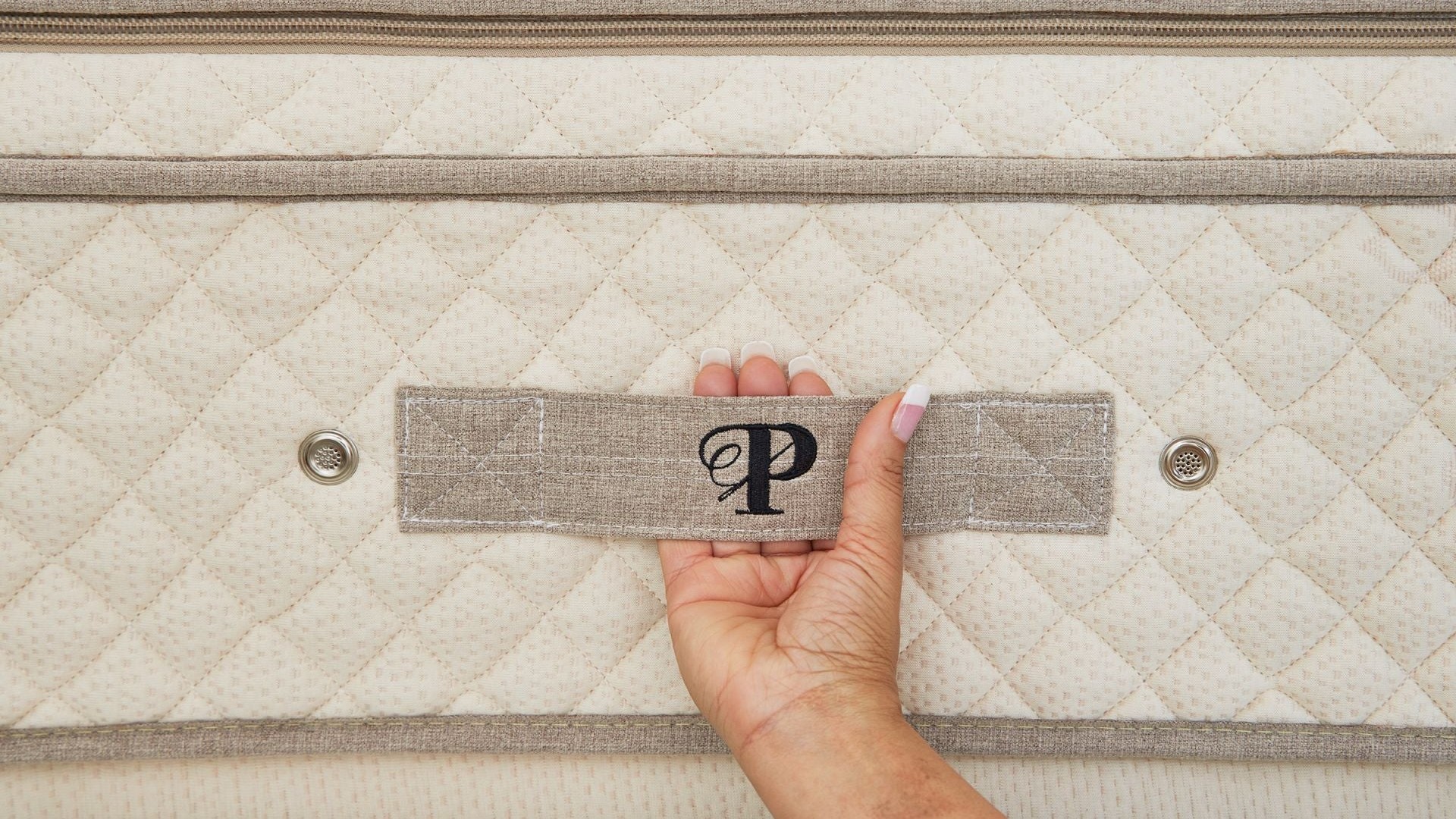
Can a latex mattress cause allergies?
Latex is naturally hypoallergenic, and so latex mattresses are generally resistant to dust mites, mold and mildew. This makes them a popular option for people with allergies or asthma. Additionally, many latex mattresses are made with natural, organic materials, which can further reduce the risk of allergic reactions. You won't be protected 100%, though: no mattress can do that, so it's still important to use a mattress protector and clean both your bedding and bedroom regularly.
Also be aware that around one per cent of population is allergic to latex itself. Symptoms of a latex allergy include skin irritation, hives, itching, sneezing, and even anaphylaxis in severe cases. If you suspect you may have a latex allergy, make sure you consult a medical professional before buying a latex mattress.
Can a latex mattress help with back pain?
If you suffer from back pain, then choosing the right mattress is very important. The important thing is to maintain good spinal alignment. This means your body maintains a broadly straight line from your head down to your shoulders and back, through to your hips, knees, and feet.
If you lie a mattress that's too soft, you'll sink in the middle and that line will become a curve. Conversely, if a mattress is too firm, your hips and shoulders won't sink in enough when you turn onto your side.
Unfortunately, what constitutes "too soft" or "too firm" varies from person to person, so finding the right balance is very much a case of trial and error. A latex mattress is definitely worth trying, though, as they're generally firm, helping to keep the spine aligned, while the natural bounciness of latex can help reduce pressure points and improve circulation.
Most importantly, while changing your mattress may help with back pain, this won't by itself solve it, so it's important to consult with a medical professional or physical therapist about any spinal issues.
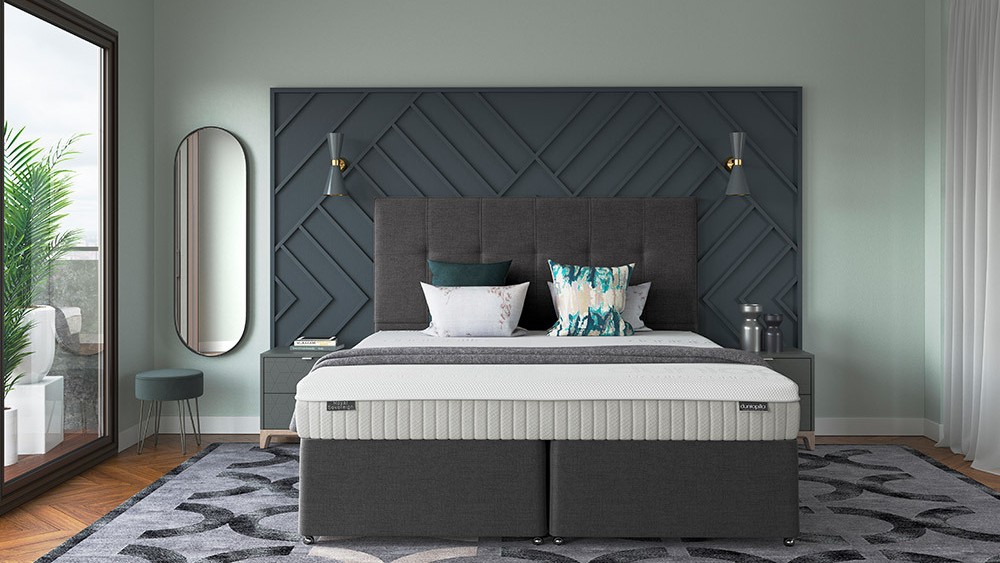
Are latex mattresses eco-friendly?
Latex mattresses are generally considered eco-friendly, because tapping the rubber tree to collect the latex-containing sap does not kill the tree, and most plantations are sustainably managed. Other materials typically used in the construction of latex mattresses, such as organic cotton and wool, are also natural and environmentally sustainable.
However, this is a broad generalisation and every product and company should be assessed on a case-by-case basis. Some manufacturers, for example, use synthetic latex, which is made from petrochemicals and so is not eco-friendly. Similarly, synthetic materials or chemicals may be incorporated in the manufacturing process.
To check whether a latex mattress is eco-friendly or not, look for certifications such as Global Organic Latex Standard (GOLS) or Global Organic Textile Standard (GOTS), which guarantees that the latex used is organic and has been grown without the use of chemical fertilizers and pesticides. The eco-INSTITUT label is also one to check for, as this means the latex is low-pollutant and low-emission. If manufacturers have achieved these certifications they'll be keen to shout about them, so it should be easy to find this information on their website.
How do latex mattresses compare to memory foam mattresses?
As we mentioned earlier, when lying on a latex mattress, you typically feel less sinking and more bounce than on a memory foam mattresses, which may be a good or bad thing depending on your preferences. But what are the other differences between these two types of mattress?
Well for starters, latex mattresses are generally more durable than memory foam mattresses, so they're likely to last longer and experience less sagging over time. They're also naturally resistant to dust mites, mold and mildew, making them preferable to memory foam for those with allergies or asthma.
On the downside, latex mattresses are generally more expensive. They're also less good than memory foam at preventing motion transfer, whereby the movements of a restless partner disrupt your side of the mattress. Plus they tend to be heavier, making them trickier to move, and requiring a firm base to support them.
Finally, latex mattresses tend to stay cooler than memory foam mattresses, which are known for retaining heat. Remember, though, that manufacturers are aware of this fact, so many memory foam mattresses are infused with special materials to keep them cool, especially at the premium end of the market.

How do latex mattresses compare with hybrid mattresses?
Hybrid mattresses combine springs and memory foam in order to provide the best of both worlds. So how do they compare with latex mattresses?
In terms of feel, both types of mattress provide a good balance between bounciness and support, and so which feels more comfortable will be very much on a case-by-case basis.
In terms of temperature regulation, latex mattresses are known for staying cool, so they're generally a better bet for those who sleep hot. That said, many hybrid mattresses use a lot of special materials and clever tech to stay cool, so the difference here is again not clear-cut.
It's difficult, too, to distinguish between latex and hybrid mattresses in terms of durability. Latex mattresses are generally known for their longevity, but hybrid mattresses can also be very durable at the premium end of the price range. Similarly, latex mattresses are naturally resistant to dust mites, mold, and mildew, but hybrid mattresses can also be hypoallergenic, depending on the materials used.
Latex mattresses are more environmentally friendly than hybrid mattresses, as long as they use natural rather than synthetic materials. They're also usually quieter, as the coils in a hybrid mattress can create some noise. On the downside, latex mattresses are often more expensive.
How do latex mattresses compare with innerspring mattresses?
Innerspring mattresses have a bouncier feel than latex mattresses, which let you sink into the mattress more. Which is better will vary from person to person, but if you're a side or combination sleeper, latex mattresses will normally provide better pressure relief on your hips and shoulders.
Latex mattresses tend to sleep cool, while innerspring mattresses are more likely retain heat and sleep warm (although not as much as memory foam). Latex mattresses are also known for their durability and longevity, although innerspring mattresses can also be durable, depending on the quality and the materials used.
Latex mattresses are naturally resistant to dust mites, mold, and mildew, making them a better option for people with allergies or asthma than innerspring mattresses. They can also be quieter than innerspring mattresses, as they contain no noisy springs. On the downside, they're generally more expensive than innerspring mattresses.
Where to buy a latex mattress
Avocado Green Mattress: was $1,399 now from $1,259.10 at Avocado
Great organic all-rounder - The Avocado Green Mattress is a premium bed-in-a-box mattress that combines certified organic latex, organic wool and cotton and a layer of tempered steel coils, in three gauges, arranged across five zones. It offers a great balance of comfort and support, with a slightly firmer feel suitable for back and stomach sleepers. Avocado usually has a 10% off deal with the SAVE10 code, which means you can get a queen size for $1,799.10.
Saatva Zenhaven Natural Latex Mattress: was $1,795 now from $1,495 at Saatva
Double sided firmness - Not sure what firmness level you need? The Saatva Zenhaven Natural Latex Mattress is double-sided, with different firmness levels, so you can pick and choose as the mood takes you. The Zenhaven is handcrafted with high-quality quality, natural, nontoxic materials to give you healthier, better quality sleep. With Saatva's current Presidents' Day deal you can get the Zenhaven in queen size for $2,745, down from $3,195.
Birch Natural Mattress: was $1,248 now from $936.60 at Birch
Affordable option - Latex mattresses don't come cheap, but here's a relatively affordable one that still delivers premium quality. The Birch Natural Mattress combines a luxurious organic cotton cover with hygroscopic organic wool, and breathable natural Talalay latex to increase airflow and keep you cool for a good night’s sleep. A queen size is currently available for $1,358.40.
Should I buy a latex mattress?
Latex mattresses are more expensive than most other types, but they are generally high-quality, comfortable, environmentally sustainable and more durable than other mattresses. So if you can afford one, you'll certainly be getting value for money.
In terms of comfort, they lie squarely between innerspring and memory foam mattresses. So if you've been unhappy with both types of mattress in the past, you'll probably find latex mattresses offer a better balance of pressure relief and support.
Because they're made of natural materials, latex mattresses are a great choice for anyone who suffers from allergies or asthma, unless of course you specifically have a latex allergy. They're also a great choice for anyone who sleeps hot at night, because they offer excellent airflow and moisture-wicking qualities.
On the downside, latex mattresses are heavy, which may be a problem if you don't have a solid bed base, or need to move your mattress from room to room a lot. They're also not as good at preventing motion transfer as memory foam mattresses, so might not be the best choice for anyone who sleeps with a restless partner.
Get daily insight, inspiration and deals in your inbox
Sign up for breaking news, reviews, opinion, top tech deals, and more.
Tom May is a freelance writer and editor specialising in tech, design and sleep products. Over the years he's tested a number of mattresses, duvets and pillows, and as a back pain sufferer, has a keen interest in finding ones that offer maximum support. Plus, in running a successful Airbnb business, sleep hygiene and providing the right bedding for guests has become a big part of his day-to-day life. He is author of Great TED Talks: Creativity, published by Pavilion Books.
